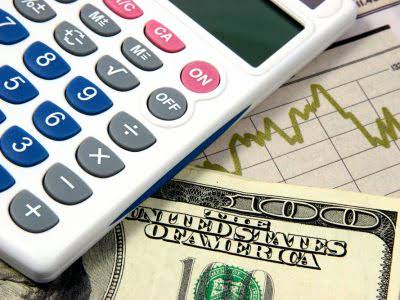
For example, if the fixed asset’s useful life is 5 years, then the straight-line rate will be 20% per year. Likewise, the depreciation rate in declining balance depreciation will be 40% (20% x 2). As seen in the formula of declining balance depreciation above, the company needs the deprecation rate in order to calculate the depreciation. Hence, it is important for the management of the company to determine the depreciation rate that can allow double declining balance method the company to properly allocate the cost of the fixed asset over its useful life. The biggest thing to be aware of when calculating the double declining balance method is to stop depreciating the asset when you arrive at the salvage value.
Fundamentals of Depreciation

Also, if you want to know the other essential bookkeeping tasks aside from fixed asset accounting, you can read our piece on what bookkeeping is and what a bookkeeper does. If the double-declining depreciation rate is 40%, the straight-line rate of depreciation shall be its half, i.e., 20%. The carrying value of an asset decreases more quickly in its earlier years under the straight line depreciation compared to the double-declining method. Double-declining depreciation charges lesser depreciation in the later years of an asset’s life. In the last year of an asset’s useful life, we make the asset’s net book value equal to its salvage or residual value. This is to ensure that we do not depreciate an asset below the amount we can recover by selling it.
Method 2 – Applying DDB Function (Double Declining Balance Depreciation Formula) in Excel

Our AI-powered Anomaly Management Software helps accounting professionals identify and rectify potential ‘Errors and Omissions’ on a daily basis so that precious resources are not wasted during month close. It automates the feedback loop for improved anomaly detection and reduction of false positives over time. We empower accounting teams to work more efficiently, accurately, and collaboratively, enabling them to add greater value to their organizations’ accounting processes. So, in the first year, the company would record a depreciation expense of $4,000. As a result, at the end of the first year, the book value of the machinery would be reduced to $6,000 ($10,000 – $4,000). If you want to learn more about fixed asset accounting as a whole, then head to our guide on what fixed asset accounting is, where we discuss the four important things you need to know.

Declining Depreciation vs. the Double-Declining Method
Using Excel’s DDB function, the depreciation values for each year are automatically calculated, making it easier for accountants to track and manage asset depreciation for various types of fixed assets. A successful business needs an efficient financing process that meets its specific needs. The declining balance technique represents the opposite of the straight-line depreciation method which is more suitable for assets whose book value drops at a steady rate throughout their useful lives. The best way to explain the double-declining method of depreciation is to look at some simple examples.
Learn how depreciation works, and leverage it to increase your small business tax savings—especially when you need them the most. Learn how to satisfy the IRS using a reasonable salary for your shareholders. Next year when you do your calculations, the book value of the ice cream truck will be $18,000. Recovery period, or the useful life of the asset, is the period over which you’re depreciating it, in years.
Step 2: Compute Current Year Depreciation Expense

First, determine the annual depreciation expense using the straight line method. This is done by subtracting the salvage value https://www.bookstime.com/articles/period-costs from the purchase cost of the asset, then dividing it by the useful life of the asset. But as time goes by, the fixed asset may experience problems due to wear and tear, which would result in repairs and maintenance costs.
- Understanding how to calculate and apply this method can provide valuable insights into asset management and financial planning.
- Declining-balance method achieves this by enabling us to charge more depreciation expense in earlier years and less in later years.
- The units of output method is based on an asset’s consumption of measurable units.
- The ending book value for the first year becomes the beginning book value for the second year, and so on.
- Declining Balance Depreciation is an accelerated cost recovery (expensing) of an asset that expenses higher amounts at the start of an assets life and declining amounts as the class life passes.
- As the asset’s book value decreases, the depreciation expense also decreases.
- Common examples of such assets include vehicles and certain types of machinery or equipment.
- The DDB method accelerates depreciation, allowing businesses to write off the cost of an asset more quickly in the early years, which can be incredibly beneficial for tax purposes and financial planning.
- The flip side is that less of its value can be claimed in its later years.
- ExcelDemy is a place where you can learn Excel, and get solutions to your Excel & Excel VBA-related problems, Data Analysis with Excel, etc.
- It’s ideal for assets that quickly lose their value or inevitably become obsolete.
- The workspace is connected and allows users to assign and track tasks for each close task category for input, review, and approval with the stakeholders.
- Depreciation expense under the declining balance is calculated by applying the depreciation rate to the book value of the asset at the start of the period.
The double declining balance method is a method used to depreciate the value of an asset over time. It is a form of accelerated retained earnings depreciation, which means that the asset depreciates at a faster rate than it would under a straight-line depreciation method. A double-declining balance depreciation method is an accelerated depreciation method that can be used to depreciate the asset’s value over the useful life. It is a bit more complex than the straight-line method of depreciation but is useful for deferring tax payments and maintaining low profitability in the early years. Selecting the right depreciation method is a strategic decision that requires an in-depth understanding of both your company’s assets and its financial goals.
